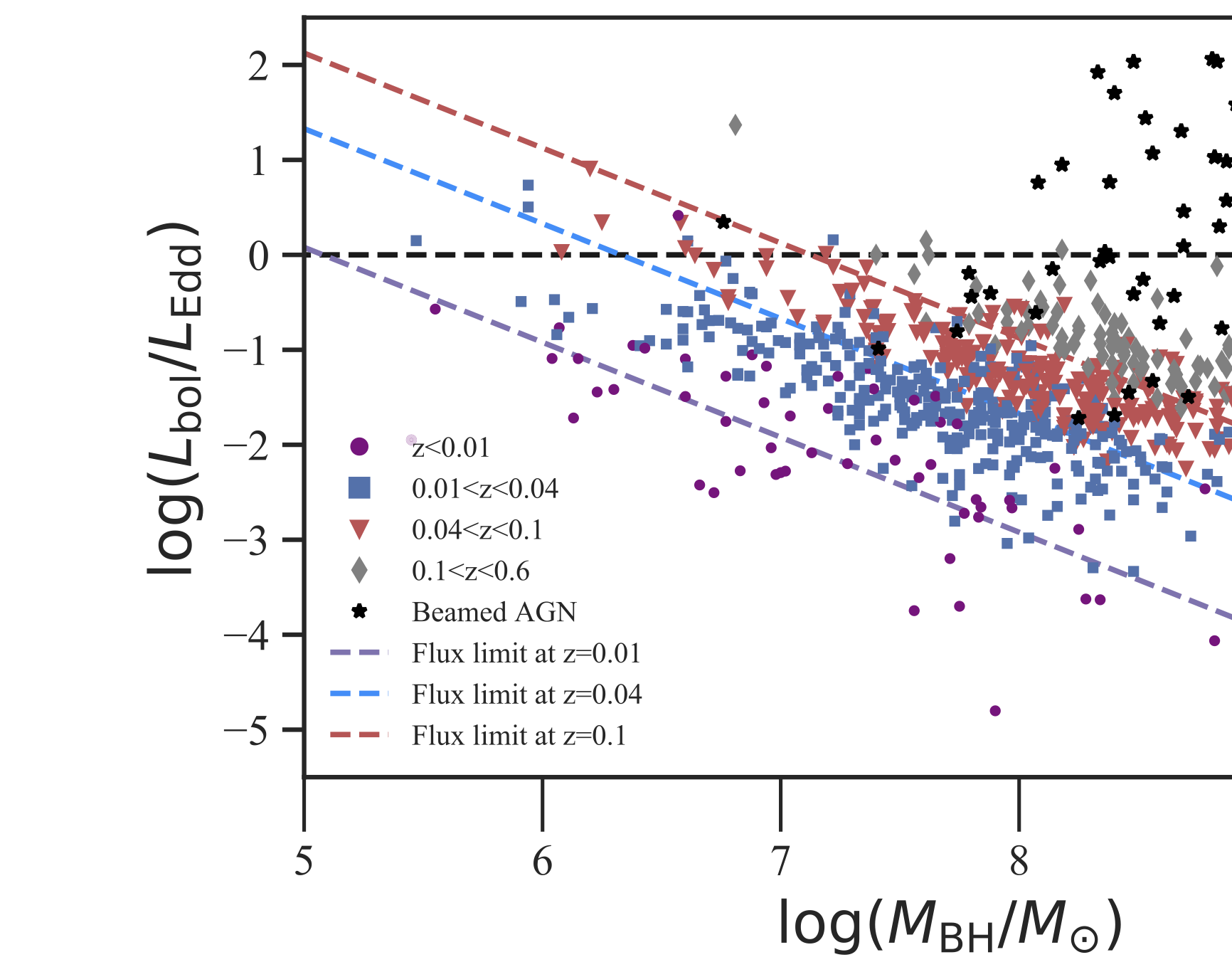The BAT AGN Spectroscopic Survey
An all-sky study of the brightest and most powerful
hard X-ray detected AGN


The Burst Alert Telescope (BAT) instrument on the Swift satellite has surveyed the sky to unprecedented depth, increasing the all sky hard X-ray sensitivity by a factor of more than 20 compared to previous satellites.
The goal of the BAT AGN Spectroscopic Survey (BASS) is to complete the first large (>1000) survey of hard X-ray selected AGN with optical spectroscopy.
This work will place constraints on the growth and structure around nearby black holes and provide a baseline for future European X-ray missions, such as ATHENA, that will perform deeper observations of more distant AGN.

The goal of the BASS sample is to obtain emission line measurements, black hole masses, and high-quality X-ray observations for a large sample (~1000) of the brightest and most powerful hard X-ray selected AGN (>10 keV) on the sky. The hard X-ray selection ensures a sample that includes both unobscured and the dusty and heavily obscured AGN that are only found in the high energy X-rays (>10 keV). In the first data release, we use the largest available optical spectroscopic sample of Swift BAT sources using dedicated observations and public archival data for a sample of 641 unique AGN with spectra that are flux and wavelength calibrated and the spectral resolution was well determined.

We performed three separate sets of spectral measurements with the 641 BASS spectra. In the first step, each AGN host galaxy was fit using galaxy stellar templates and the velocity dispersion was measured when possible. The emission lines were then fit using narrow components and broad components when needed. Black hole masses in AGN with broad emission lines were measured by a more detailed fit to the spectral regions that include the broad Hβ and/or broad Hα lines, or the MgIIλ2798 and CIVλ1549 lines in high redshift sources. Finally, we estimated the bolometric luminosity (Lbol) from the X-ray luminosity to estimate the accretion rates.

Using the black hole mass estimated from velocity dispersion and broad Balmer lines,
we find the the black hole masses of our BASS AGN range between 105.4 - 1010 solar mass.
We combined the MBH estimates with the estimates of Lbol, derived from the BAT X-ray luminosity,
to calculate the Eddington ratios of the BASS AGN, L/LEdd erg s-1.
Our collaboration is doing a number of different studies that combine the very high quality data across the full SED for these nearby AGN (X-ray-UV-optical-NIR-MIR-FIR-submillimeter-radio). Our goal is to use the estimate of intrinsic AGN power from the hard X-rays for obscured AGN to study a range of scientific topics on AGN and galaxy evolution. BASS has a slack group with more than 60 researchers working on different projects and biweekly telecons, please contact us if you are interested with a project idea to join.